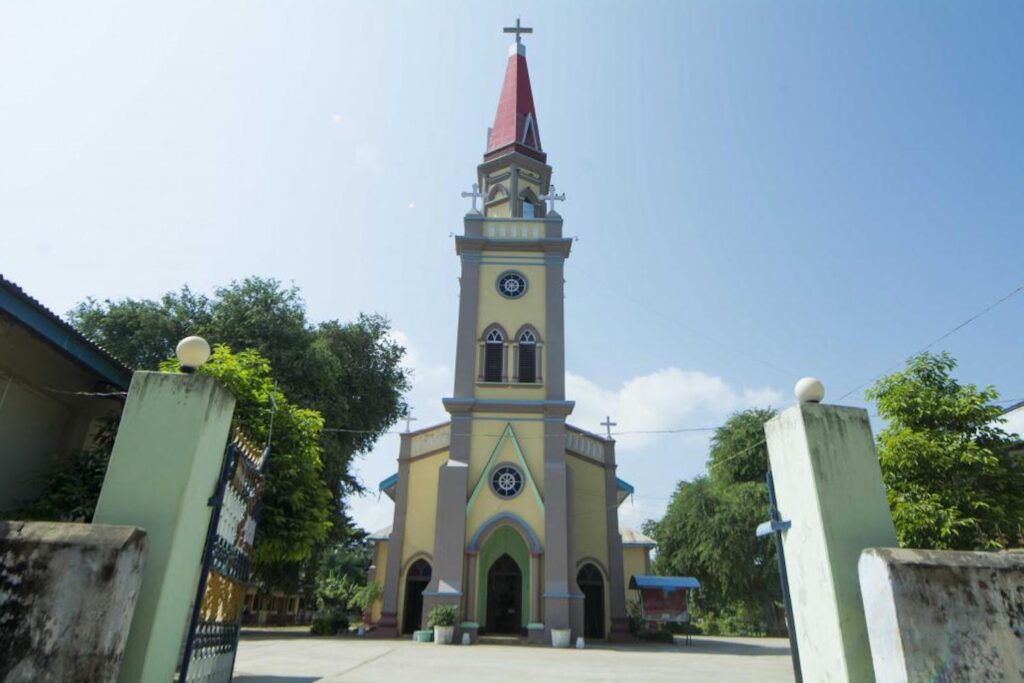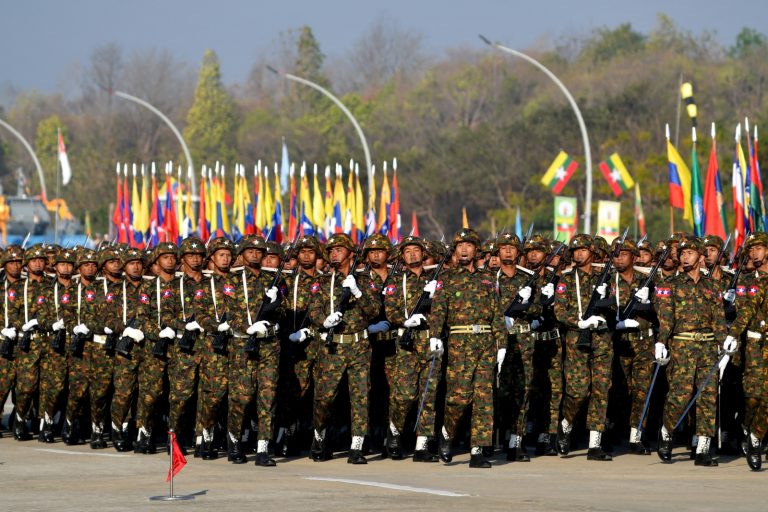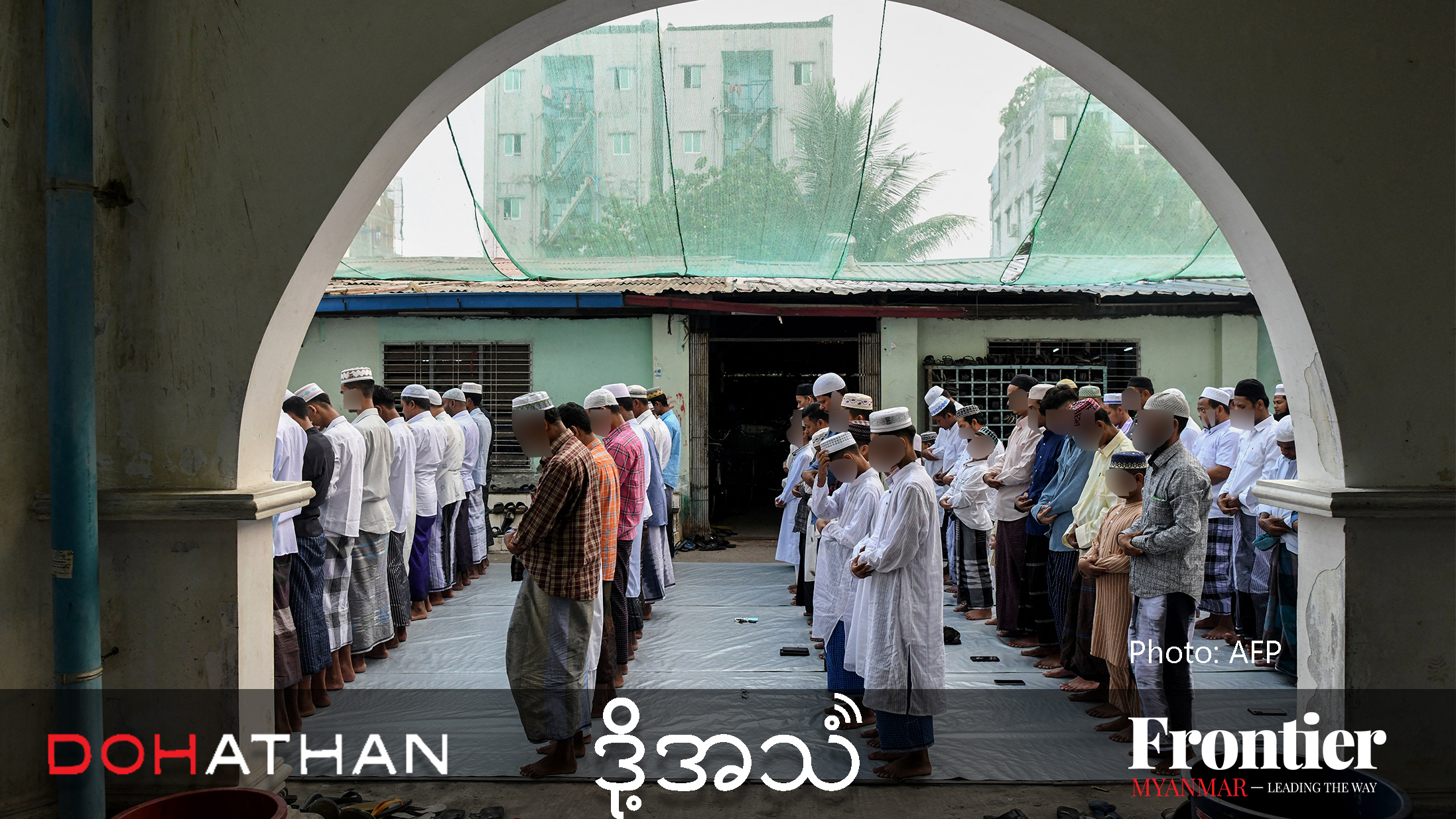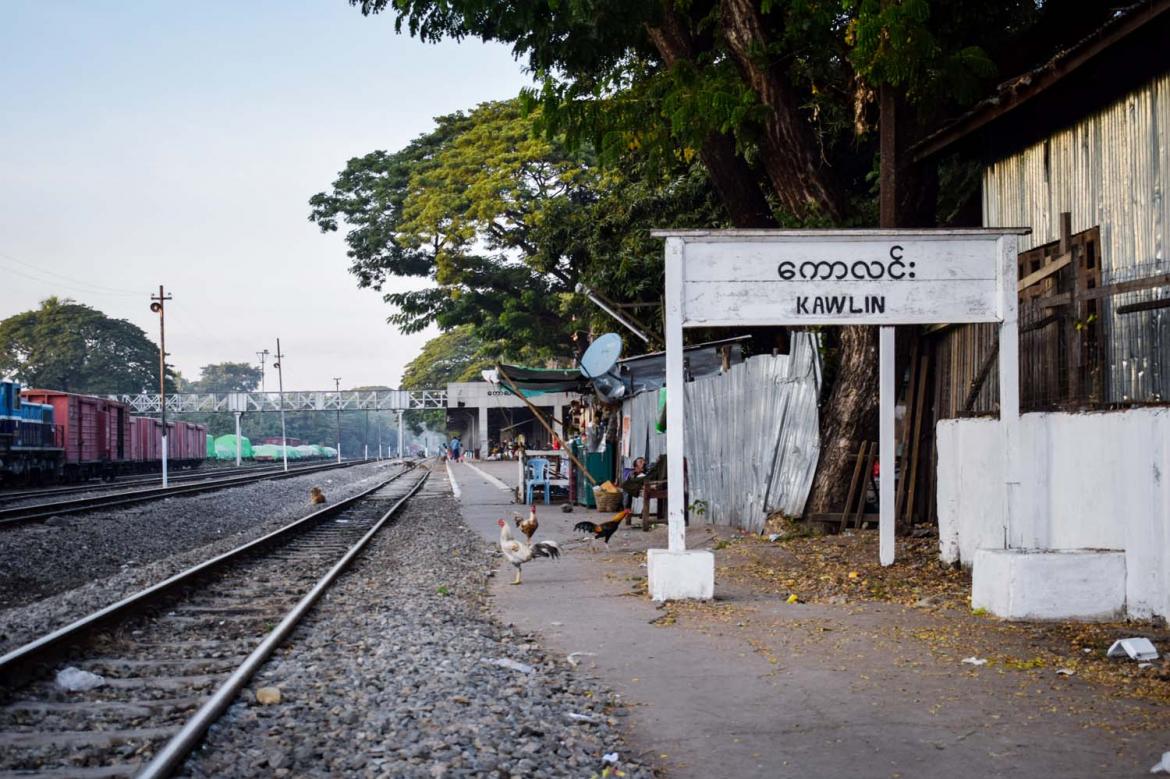Descendants of Portuguese Roman Catholics have lived peacefully in central Myanmar for centuries, but since the coup they’ve faced the cruelty of a military steeped in Buddhist nationalism.
By FRONTIER
When her bus was stopped at a military checkpoint in Sagaing Region’s Ye-U Township, 31-year-old Ma May Oo* was singled out due to her tall height, blue eyes and unusual facial features.
“I’ll take this kalar ma for a while for questioning,” said a soldier, using a derogatory term more typically applied to Muslims and South Asians. “The rest of you can go.”
Fearing what would happen next, May Oo’s fellow Chan Thar villagers protested. This drew an angry rebuke from the soldiers, who menacingly aimed their guns at the passengers.
“We shouted at the soldiers and begged them,” recalled Daw Nyunt May*. “But the soldiers said if we don’t go, they will kill all of us and burn the bus… We were very afraid and there was nothing we could do to stop them.”
May Oo was roughly dragged out of sight by the soldiers, and as the bus reluctantly pulled away, Nyunt May heard two gunshots.
Chan Thar village is famous for having a large population of Bayingyi – Roman Catholics of Portuguese descent who have lived in Myanmar for centuries. After hundreds of years of intermarrying, many of them are now physically indistinguishable from neighbouring Bamar populations, but others, like May Oo, stand out. This can be dangerous in Myanmar, where the military preaches a toxic brand of Bamar supremacy and Buddhist nationalism.
That day, October 12 last year, May Oo had gone to Ye-U town to buy supplies for her shop. She passed through checkpoints manned by both the military and the armed groups formed in opposition to the 2021 coup, broadly known as People’s Defence Forces. Nyunt May, who had travelled with May Oo many times, said the other woman was often pulled aside for questioning by the military due to her unusual appearance, and was asked about her ethnicity and where she was from.
When Nyunt May returned to Chan Thar village, she told May Oo’s family what had happened. That same evening, the local PDF attacked the military checkpoint, recovering the burned body of a woman with gunshot wounds.
“Her family confirmed it was the body of May Oo,” Nyunt May said.

Targeted for their faith
Chan Thar village is located about 10 kilometres west of Ye-U town, and is one of the most prominent Bayingyi settlements in the country. Before the coup, it had about 530 households and a population of 2,000, most of whom are Roman Catholic. Their presence is an unusual feature of the Dry Zone of central Myanmar, which is considered the Bamar heartland.
Portuguese traders and adventurers first came to what is now Myanmar in the late 1500s. They included Filipe de Brito e Nicote, who went on to govern Syriam, a port town near today’s Yangon, before being defeated and impaled by the Taungoo dynasty king Anaukpetlun. The king rounded up 4,000-5,000 of the remaining Portuguese settlers and marched them north to the royal capital of Ava in the Dry Zone, where his successor King Thalun granted them land in the rural hinterland of what is now Sagaing Region.
Nearly a year since May Oo’s murder, Nyunt May said Chan Thar village has been almost completely destroyed by repeated military raids and arson attacks. Like most residents, she and her family have had to relocate, fleeing in April last year.
“Many people in our village have been killed or arrested, but Ma May Oo’s incident sticks with me because I witnessed it myself. Whenever I think about Ma May Oo, who was taken away and killed in front of me, I’m filled with hate for the military,” she said.
Chan Thar resident U Myint Aung*, whose home was burned down last year, said the village was raided a total of seven times, with seven civilians confirmed killed and five more missing and presumed dead.
“It happened twice in 2021, three times in 2022 and twice in 2023. I think we were targeted so often because it’s a Christian village,” he said.
Two of the murdered civilians were allegedly killed during a raid by around 130 soldiers on January 10 last year.
“Both of the victims had injuries that showed signs of serious torture,” said a member of the Ye-U PDF, who said one victim was found with his hands tied behind his back and his head caved in.
“Afterwards, the troops wrote [graffitied] messages saying that they would kill all the other kalar in the village as well,” he said.
These threatening messages were a common thread in interviews across Bayingyi villages. Frontier viewed multiple photographs showing similar phrases scrawled on the walls of buildings.
“The military hates us. After they leave, they would write phrases like ‘Get out kalar’ all over the place,” said Myint Aung.
He said by May this year, the military had destroyed almost every building in the village.
“Before, when a military column would leave, villagers would run back to see whose house had been burned down and whose house was still standing. Now, almost all of the houses have burned down, so there’s no need to check.”


The Chan Thar village church, pictured in 2017 (Frontier), and again after it was razed by the military in January (supplied).
Heritage destroyed
The military hasn’t even spared the churches, many of which are hundreds of years old.
“It broke my heart in January when they burned down the main church in the village,” said Myint Aung. “The Assumption of Mary Church was built in 1894.”
In May last year, videos spread on social media showing the charred remains of Chaung Yoe village in Taze Township, north of Ye-U. Among the ruins was the wreckage of a 120-year-old church.
“Since last year, I haven’t been able to return,” said resident U Tint Lwin, who took shelter in a nearby village.
Ko Saw, a member of the Khin-U Special Force Organization resistance group, said in addition to religious persecution, the military targets churches in order to deprive civilians of shelter. The military has for decades targeted civilian populations that it suspects support its armed opponents, in an attempt to cut these opponents off from food, funds, intelligence and new recruits.
“The military knows that religious buildings can shelter more people, so they usually destroy them as well as schools wherever they go,” he said.
Myanmar’s highest-ranking Catholic, Archbishop of Yangon Cardinal Charles Maung Bo, courted controversy in 2021 when he was pictured celebrating Christmas with coup leader Senior General Min Aung Hlaing. A member of the Bayingyi community, Charles Maung Bo originally hails from Mon Hla village in Khin-U Township elsewhere in Sagaing.
In a short message, Charles Maung Bo appealed for “extraordinary efforts to bring peace”, including through forgiveness, reconciliation and dialogue.
But his outreach to the military chief didn’t protect Mon Hla from the hellish arson campaign engulfing Sagaing. In November last year, the military attacked the village with helicopters and ground troops, reportedly destroying hundreds of houses and leaving three civilians dead, including a seven-year-old child.
Ko Saw said an earlier attack in July last year killed one civilian, while another five civilians were abducted. Two of their bodies were later recovered, while the other three were never seen again, and are feared dead.
“Charles Maung Bo shared a Christmas cake with the leader of the military council. I was disappointed to see this, but I thought at least it would help protect our village,” said U Khin Maung Kyi*, a resident of Mon Hla. “However, the military attacked the village and burned it anyway. They destroyed the church and Charles Maung Bo’s house. What can we expect from him? He can’t even protect his own house.”

Ko Myo, a resistance fighter, said the military’s brutal treatment of the Bayingyi shows its hatred of religious minorities. He claimed that last year, the military also attacked Nabet village, a Bayingyi settlement in Sagaing’s Myaung Township, and left a dead body with a written warning saying, “you must all die like this”.
“People from Bayingyi villages are more likely to be killed if they encounter soldiers. Although the military is killing all people regardless of race, it’s obvious that they are more willing to use violence against non-Buddhists,” he said.
Captain Paing Satt, a Tatmadaw soldier stationed at Northwestern Command in the Sagaing capital Monywa, claimed there were no direct orders to discriminate against Bayingyi people. But his comments revealed deep prejudice and a failure to differentiate between combatants and civilians.
“Do you mean the Portuguese tribes? They look like kalar and practice Christianity, don’t they? Many of them are unruly rebels who have gone through military training with the KIA to fight against the government,” he said.
The Kachin Independence Army has fought for decades for autonomy for the Kachin people, many of whom are also Christian. Since the coup, it has allied with the pro-democracy uprising, training and arming some PDF groups. Via these groups, it has also extended its reach from Kachin State southwards, deep into Sagaing.
“The military has to eliminate those who don’t peacefully practice their religion,” said Paing Satt. “If the Bayingyi rebel, the Bayingyi must be eliminated. If the kalar rebel, the kalar must be eliminated.”
* indicates the use of a pseudonym for security reasons







